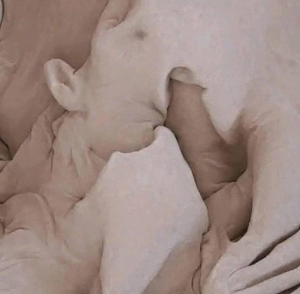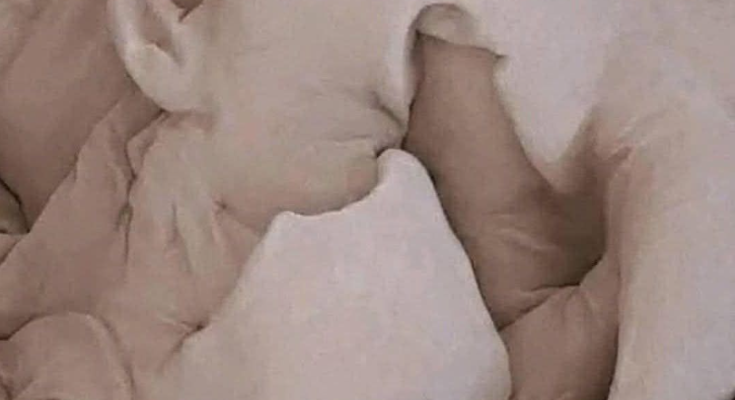The Truth Behind the Viral Myth Linking Breast Size to Genital Anatomy
In the age of viral posts, bold and misleading statements can spread like wildfire. One of the most persistent myths floating around online is the claim that “a woman’s large breasts indicate something about her vaginal size or sexual characteristics.” This statement, often shared in sexualized memes or sensational headlines, may grab attention — but it’s entirely false.
To understand why, we need to look at where such ideas come from, what science actually says about human anatomy, and why body myths like this can be damaging.
1. Where This Myth Comes From
Throughout history, societies have often linked physical features — especially women’s bodies — to sexuality, fertility, and desirability. In many cultures, breasts have been sexualized for centuries. Myths have sprung up suggesting that their size reflects everything from fertility levels to sexual activity.
These myths weren’t based on scientific research. Instead, they grew out of cultural stereotypes, misunderstood biology, and male-centered beauty standards. Over time, the myths were repeated so often that many people began to believe they were true.
Today, social media amplifies such claims even faster. A few words — often cut off with “See more” — can make a false statement sound mysterious or “forbidden,” encouraging people to click, share, or repeat it.
2. Breast Size: What It’s Actually Determined By
Breast size is mostly determined by:
-
Genetics — inherited traits from parents,
-
Hormonal factors — particularly estrogen levels during puberty and adulthood,
-
Body fat distribution — breasts are mostly made of fatty tissue,
-
Age and pregnancy — hormonal changes can increase or decrease size,
-
Weight fluctuations — gaining or losing weight can change breast volume.
None of these factors have anything to do with a woman’s vaginal anatomy. Breasts and genitals develop from different tissues during puberty, influenced by different hormonal and genetic mechanisms.
3. Vaginal Anatomy: What Really Matters
The size, shape, and structure of a woman’s vagina are highly individual, just like fingerprints. A person’s genital anatomy depends on genetics, hormonal development, and natural variation. It does not correlate with breast size, height, weight, or any other external body feature.
Importantly, the vagina is also a muscular organ that can expand and contract. This means that even if there are differences between individuals, they are often not visible or directly measurable in the simplistic way clickbait claims suggest.
4. Why These Myths Spread
There are several reasons why statements like “big breasts mean X about the vagina” get repeated so often:
-
Curiosity + taboo: Sex is still a taboo subject in many societies, making sensational claims more likely to get attention.
-
Lack of education: When people don’t get reliable sex education, they may rely on myths or social media posts for “information.”
-
Sexualization of women’s bodies: Myths like this reduce women to their physical traits, reinforcing harmful stereotypes.
-
Clickbait marketing: Sensational, sexualized statements get clicks, comments, and shares — which is exactly what some websites and pages want.
But repeated misinformation can become dangerous when people start treating it like fact.
5. The Harm of Linking Body Parts to Sexuality
While it might sound like a joke to some, myths like this can have real consequences:
-
Body shaming: Women with smaller or larger breasts may feel judged, objectified, or insecure.
-
False assumptions: It encourages people to think sexual compatibility or attractiveness can be “measured” by body parts.
-
Pressure and insecurity: Many women grow up hearing distorted messages about what their bodies “should” look like.
-
Reduced respect and empathy: Myths that sexualize certain features often lead to others seeing people as objects, not individuals.
Healthy sexuality is rooted in respect, communication, and understanding — not in crude physical stereotypes.
6. What Science Actually Says About Attraction
Research in fields like evolutionary psychology and human biology does show that humans sometimes associate certain physical traits with fertility or attractiveness — but this is not the same as medical fact.
For example, some studies have found that men in certain cultures may associate larger breasts with fertility or health, but this is a social and psychological perception, not a biological rule. In reality, breast size does not predict fertility, sexual behavior, or genital characteristics.
Attraction is complex. It’s influenced by culture, personal preference, and individual experience far more than by simple body measurements.
7. Real Sexual Health Is About Understanding — Not Myths
Instead of relying on viral myths, understanding basic anatomy can help foster more realistic, respectful conversations about sex and the human body.
Here are a few truths that often get drowned out by sensational claims:
-
Every person’s body is unique.
-
Sexual compatibility isn’t determined by looks.
-
Confidence, communication, and trust matter far more than physical features.
-
Healthy relationships are built on respect, not assumptions.
By replacing myths with facts, we help create a culture where people feel safer, more respected, and less pressured to “look” a certain way.
8. How to Spot and Stop Misinformation
If you see a statement like the one this article is addressing, there are a few easy steps to check whether it’s credible:
-
Look for sources. Real medical information should come from universities, hospitals, or respected journals.
-
Be cautious with “viral” headlines. If it sounds too bold or sexualized, it’s probably clickbait.
-
Consult professionals. Trusted health organizations or licensed doctors can provide reliable answers.
-
Don’t share unverified claims. Forwarding myths gives them more power to misinform others.
9. Celebrating Real Diversity
One of the most beautiful truths about the human body is its diversity. Breasts come in every shape, size, and form — none more “right” or “better” than another. The same is true for genitals.
Healthy sexuality is about learning to value people for who they are, not judging them by a single physical feature. When society lets go of harmful myths, people can feel freer, more confident, and more authentic in their own skin.
Conclusion: A Myth That Deserves to End
The viral claim that a woman’s breast size somehow indicates the size or tightness of her vagina is completely false. It’s not based on anatomy, biology, or science — only on sexualized stereotypes.
Spreading such myths may seem harmless to some, but it contributes to body shaming, unrealistic expectations, and disrespectful attitudes toward women’s bodies.
Real attraction, intimacy, and respect are built on much deeper qualities than physical measurements. Bodies are not coded messages to decode — they’re living, unique, human.
The more we challenge these myths, the closer we get to a society that values truth over sensationalism, and respect over objectification.
✅ Key Takeaway:
Breast size has no connection whatsoever to vaginal anatomy or sexual ability. Myths like this should be questioned, not believed.


